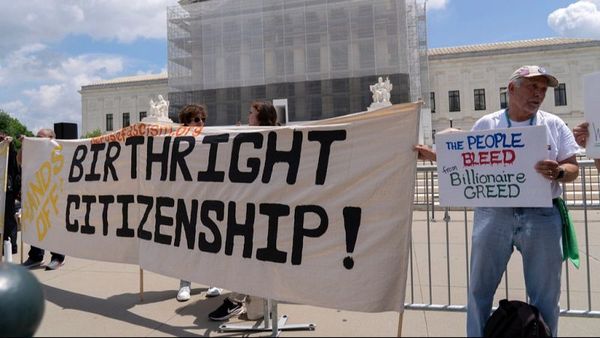
In a closely watched decision on Thursday, the Bank of England (BoE) lowered its base rate by 25 basis points—from 4.25% to 4%—marking its lowest level since March 2023.
The move, while widely expected, was anything but unanimous, exposing deep divisions within the Bank's Monetary Policy Committee (MPC) and raising questions about the UK's economic direction.
Historic Vote Reveals Division Within the Bank
For the first time in its 28‑year history, the Monetary Policy Committee (MPC) conducted two rounds of voting. An initial 4‑4 split prompted a second vote, in which independent member Alan Taylor switched his support, giving a narrow 5‑4 majority in favour of the cut.
Bank Governor Andrew Bailey emphasised that while the trajectory for rates remains downward, the outlook is increasingly uncertain, with persistent inflation posing a significant caveat.
Why Now? Weak Growth Meets Sticky Inflation
The BoE's decision reflects a delicate balancing act: economic data reveal a slowing economy, with Q2 GDP growth barely above zero, rising unemployment at 4.7%, and inflation stubbornly elevated at 3.6% in June, expected to peak at 4% in September.
Significant pressure on food and energy prices, as well as rising employment costs, create upside inflation risks, prompting the Bank to warn of muted gains from cutting rates too aggressively.
Mortgage Borrowers See Immediate Gains

The rate cut spells good news for homeowners. Tracker and standard variable-rate (SVR) mortgage holders could see average monthly savings of £29, or around £348 per year, according to The Independent. For households already squeezed by soaring living costs, this offers welcome—if modest—relief.
In a sign of changing sentiment, two-year fixed mortgage rates have now dipped below five-year rates, a reversal not seen since the 2022 mini-budget crisis. Analysts suggest this may boost activity among first-time buyers and homeowners seeking to remortgage.
The Bank of England's decision to slash interest rates to 4% spells welcome news for borrowers, particularly those on tracker and standard variable-rate (SVR) mortgages.
Shifts in Fixed-Rate Mortgage Pricing Boost Market Confidence
The rate cut has also caused market shifts in fixed-rate mortgage pricing. For the first time since the 2022 mini-budget crisis, two-year fixed mortgage rates have fallen below five-year rates, as reported by The Times. This reversal signals growing confidence that rates may fall further in the near term, potentially encouraging more homeowners and first-time buyers to secure shorter-term deals.
In the housing market, this could prompt a modest revival in demand, especially among first-time buyers who were previously priced out by higher monthly repayments. However, brokers have warned that lenders remain cautious, and any substantial easing in credit conditions will likely be gradual.
Savers and Pensioners Face Falling Returns
Meanwhile, savers and pensioners are bracing for disappointment. The interest paid on easy-access savings accounts, which had climbed to over 5% earlier this year, could now begin to retreat, especially if more cuts follow. According to Moneyfacts, the top-paying variable-rate ISAs have already started to fall, with some banks adjusting their offers in anticipation of the central bank's move.
This is especially worrying for retirees relying on interest income, as falling savings rates erode returns and reduce purchasing power in the face of lingering inflation.
While annuity rates—used to convert pension pots into guaranteed lifetime income—may not fall sharply, financial advisers warn that any decline in long-term gilt yields, which often accompany rate cuts, could gently push annuity payouts lower over time.
Rachel Springall of Moneyfacts urges savers to act fast to lock in the best rates, warning that staying loyal to high-street banks may cost them, as many offer lower returns than challenger banks. She advises regularly reviewing accounts and switching to more competitive options ahead of expected rate cuts.
Looking Ahead: A Cautious Path
The Monetary Policy Committee's close 5–4 vote reflects deep uncertainty about the economy, signalling that further cuts will be gradual and likely delayed until early 2026.
The Bank is keen to see more convincing evidence that inflation is easing before loosening monetary policy again, amid ongoing pressures from wage growth and increased National Insurance contributions.
Following the announcement, the pound gained modestly, rising about 0.4% to $1.3405, suggesting some market confidence in the move.
However, UK government bond yields also rose, indicating investor wariness about future borrowing costs and the pace of economic recovery. Meanwhile, the FTSE 100 index fell by approximately 0.8%, reflecting concerns over slowing economic growth and declining corporate earnings.
Calm before a Storm
This latest cut may feel like a reprieve for mortgage holders, yet it comes with a caveat-laden warning from the BoE. Persistent inflation—fanned by food, energy and wage pressures—means the central bank must tread lightly.
While the rate cut offers some breathing room for borrowers, the Bank's message is clear: this is no time for complacency.
'The path continues to be downwards,' Bailey said. 'There is, however, genuine uncertainty about the course of that direction of rates.'
The question now is whether this is the beginning of a return to monetary stability—or the calm before a far deeper economic storm.







